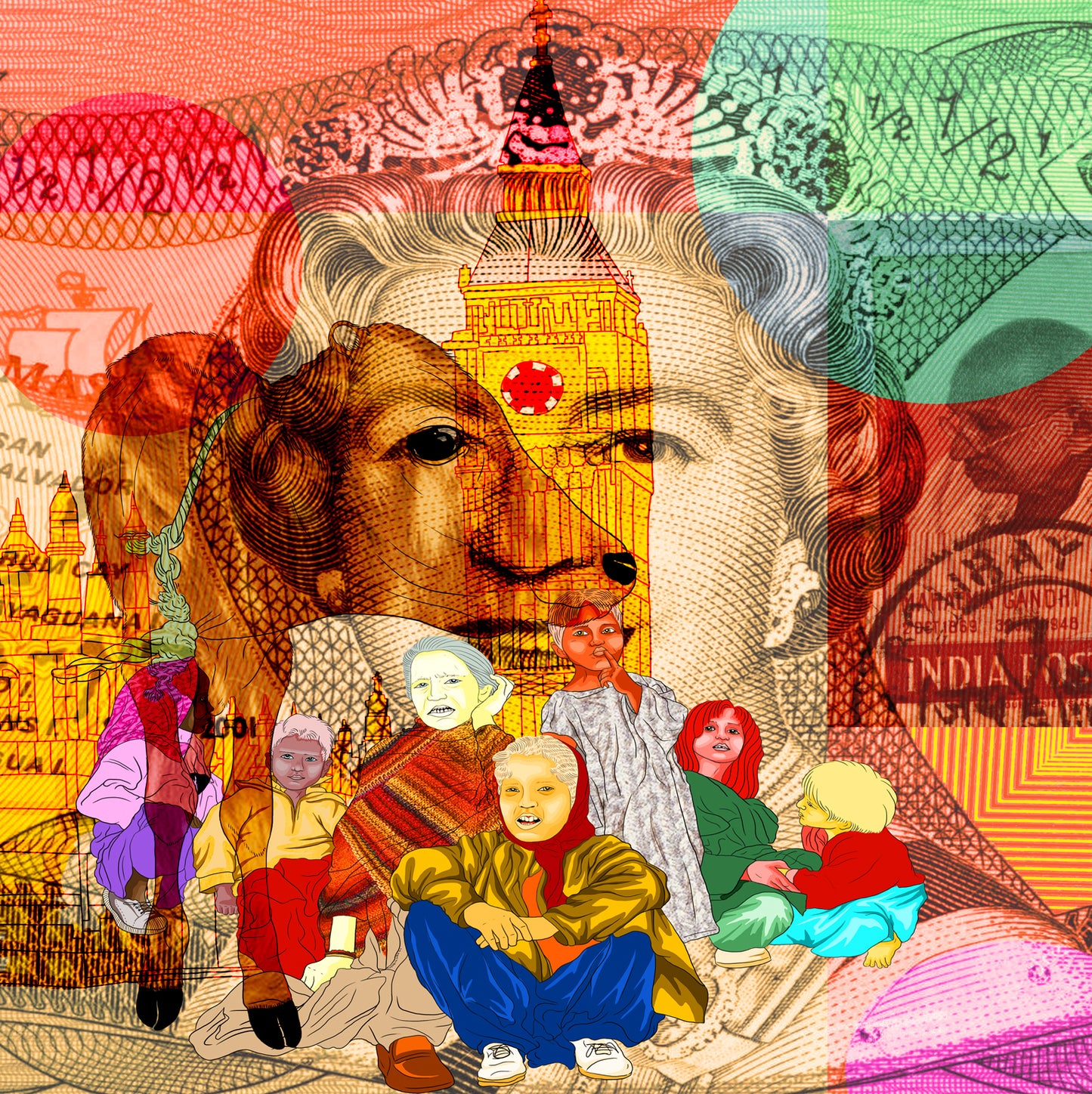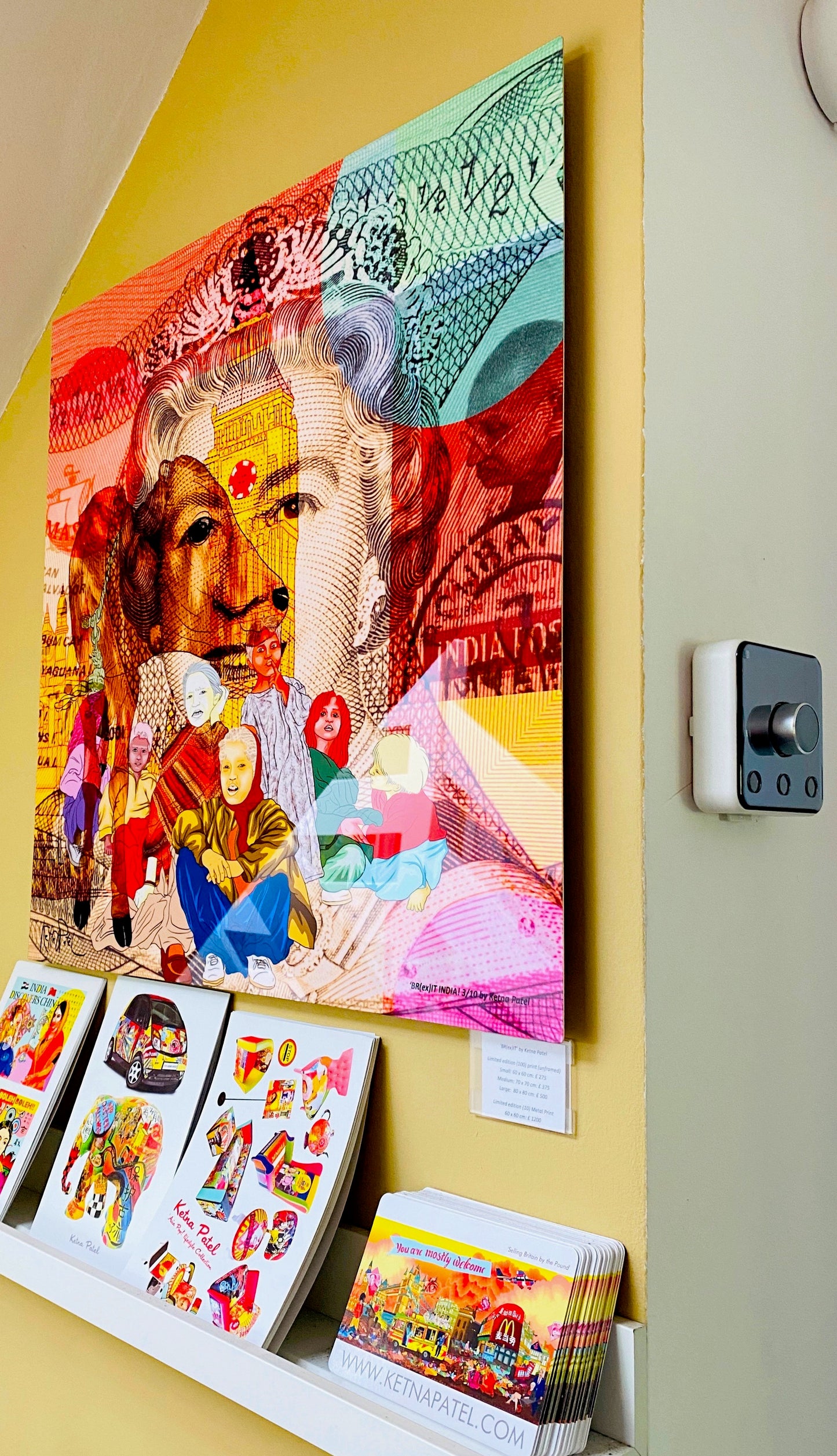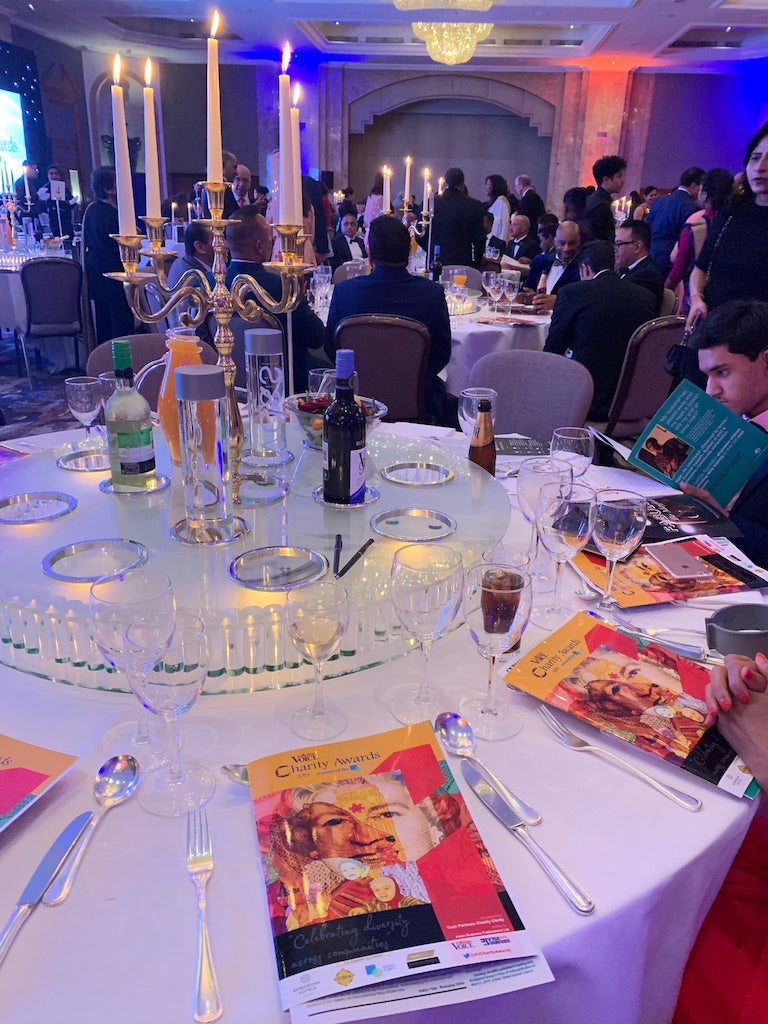KETNA PATEL ART STUDIO
BRITINDIA
BRITINDIA
Couldn't load pickup availability
Share
This icon, whose face graces many postage stamps in my desk drawer—now deemed ‘expired’ by the Post Office—left this world two years ago. Queen Elizabeth II, a figure so present in our lives for decades, is now a memory. But how will she be remembered in time? Do our collective memories, like those postage stamps, also expire? As a British Indian, I embody a fusion of two vibrant identities, each deeply rooted in proud and complex histories. Within me, and within so many like me, exists a community navigating the layers of our shared heritage, from empire to independence, from monarchy to democracy.
In this artwork, timelines converge and intertwine, blurring the distinction between past and present, between background and foreground. The sacred eye of the cow merges with the gaze of the Queen, symbolizing her sovereign reign over the United Kingdom. Her third eye, a representation of time itself, mirrors the iconic face of Big Ben, ever-present and unrelenting, a reminder of the passage of eras and the constancy of her rule. Mohandas Gandhi appears, immortalized on a postage stamp—a poignant reminder of India's struggle for independence and the enduring complexity of the colonial past. Nearby, the Pound Sterling currency note signifies wealth and prosperity, a symbol of London's historic role as a global financial hub, birthed along the banks of the Thames.
British ships sail through the composition, evoking the maritime prowess of the British East India Company and the expansive trade routes that connected Britain to India—a legacy both of power and exploitation. Seated children, innocent and full of potential, represent the future, the next generation that will carry forward our collective stories, however complex they may be.
This composition is a "leela"—a cosmic play—where ages are compressed into a single moment, inviting us to interpret the layers of history, memory, and identity. It asks us to reflect on the enduring impact of Queen Elizabeth’s reign, on the colonial legacies that shaped her time, and on our place within this unfolding narrative. How will we remember her, and what parts of her legacy will continue to resonate—or fade—within our collective consciousness?
Each Fine Art Print is titled, numbered and signed in Ketna’s handwriting.
Depending on each composition’s ‘personality’, colour spectrum and destined geographical location, the Artwork is printed either as a C-Type print on Fuji gloss paper or as a Giclee print on Hahnemuhle Photo Rag paper. (For humid countries e.g Singapore, C-type Fuji paper is advised as it is does not let moisture and mould through)
All Prints are made at the most accredited and reputable Printing studios in London, Singapore or New Delhi, using the best quality fine art archival paper available.
The studio meticulously keeps account of each numbered print, including when and who it was sold to, so there is no chance of duplication.
Each Fine Art Paper Print comes in an edition of 50, so for the three sizes, the total prints ever made will be 150.
Each Metal / Acrylic Print comes in an edition of 25
Each Print is made to order. Please allow 10 working days for delivery.
















